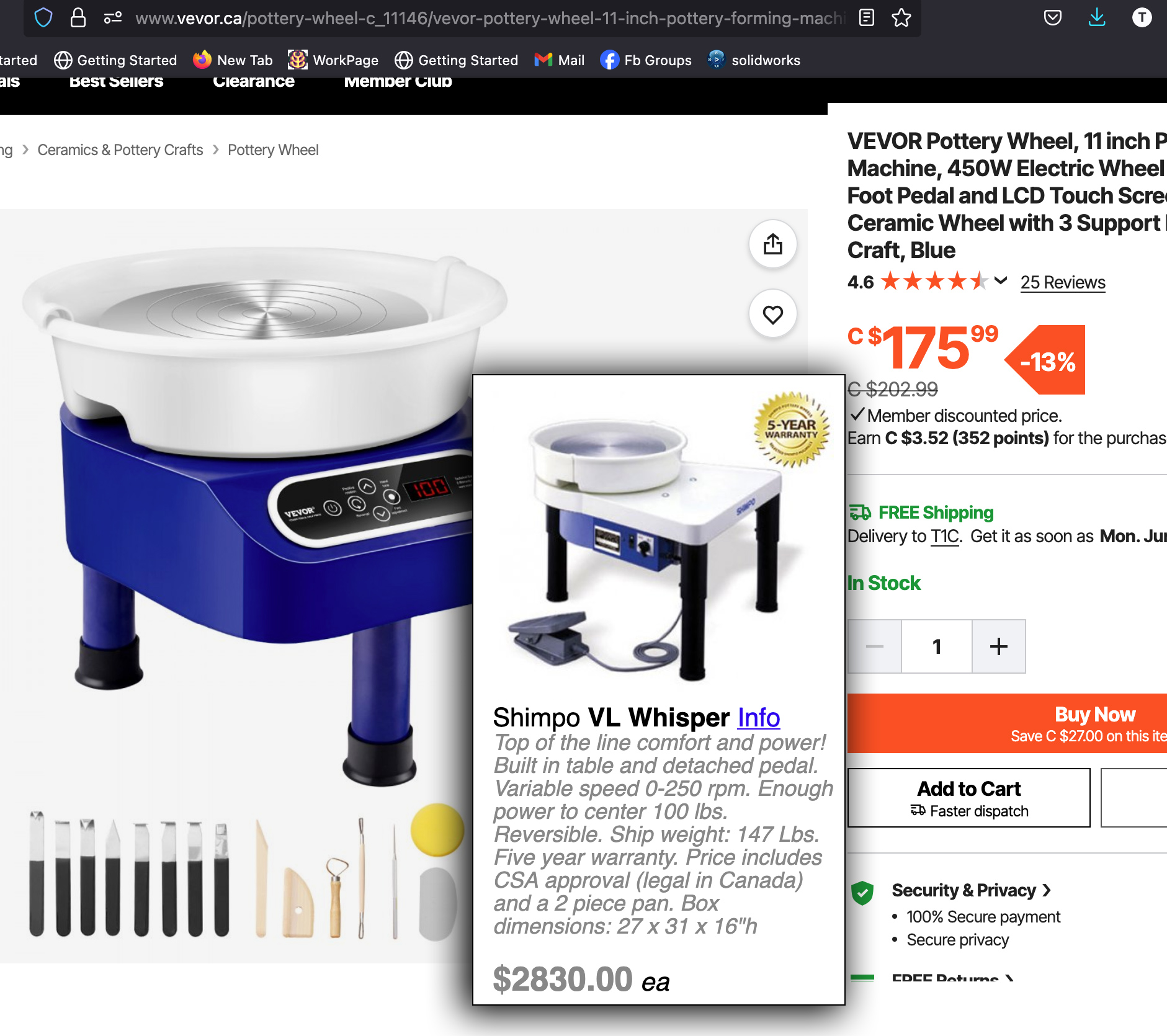| Monthly Tech-Tip | No tracking! No ads! | |
Vevor Potter's Wheel for $175.
Can this be real? What am I missing?
Pros:
-It actually does work well.
-Metal construction (plastic foot pedal), bottom panel removes easily. Foot pedal is easy to open and fix. Motor is standard and easy to get.
-The wheelhead and pan are similar in size and quality to standard wheels.
-Easily purchased online at Amazon or Vevor.com (.ca in Canada).
Cons:
-Small, too light, be prepared to make leg extensions, a platform or use it tabletop.
-Power limits how much clay can be handled, likely 5 lbs or less (for novices, this is less of a limitation).
-Not bat pin holes but they could be drilled easily (or other methods of holding bats in place could be used).
Understanding the main reason this is so inexpensive is important to appreciate it's limitations. Typical wheels have AC motors with relatively complex electronics to control their speed (these combos are expensive). This wheel employs a stepper motor. These move in tiny, discrete steps and are perfect for things like robots and 3D printers. However, they can be force-fit to continuous motion (by the electronics delivering constant step-pulses). But pulse frequency must be gradually increased and decreased to ensure the motor does not miss any steps. Other issues: Stepper motors exhibit resonance at certain operating speeds (controllers need to move through these zones quickly) and torque changes in a non-linear relationship to speed (top speed is thus limited). Success thus depends on smart electronics to convert the variable voltage from the simple potentiometer in the foot pedal to pulses the motor can handle. It is unclear how repairable this is, more info coming soon.
Videos
Links
| URLs |
https://www.youtube.com/watch?v=JEjOnZvO3BY
Vevor Pottery Wheel footpedal sensitivity issue solved by their customer service. |
Got a Question?
Buy me a coffee and we can talk

https://digitalfire.com, All Rights Reserved
Privacy Policy

